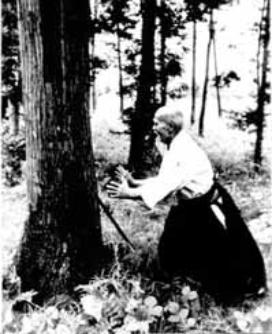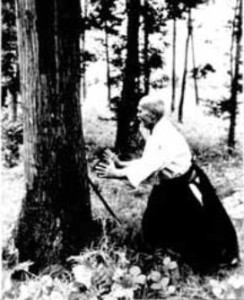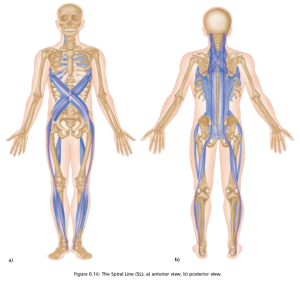For as long as I can remember, I have always believed that the body is meant to be used as a fully actualized, integrated unit – nothing can (or should!) exist in isolation. By this I mean that muscle, tendon, ligament, and bone are all equally important and must all be unified in producing amazing degrees of strength and skill for fitness, martial arts, sports, or life. And, in most cases this is completely true.
However, in my mind it also meant that even though the most widely acclaimed adepts of internal power (IP) almost all say that strength training (weight lifting) and muscle building will have deleterious effects on producing internal power, I do not quite believe it to be true. Moreover, while I have been training in both external strength and internal power together for the past 4 years I was never quite able to articulate to myself the differences inherent in each model that allow them to produce vast amounts of force. I just trained both along with some very specific and strategic methods of recovery that I used to remove residual tension from the muscles to aid in my IP pursuit.
It was during my training with Dan Harden here in NJ this past weekend that it finally clicked and I got the difference in force production models through my thick skull. Now, mind you, Dan has been saying the same thing since I first began training with him in 2009, it’s only now that I finally have the experience enough to hear it and make the distinctions – hey, we’re all constantly learning, I’m no different! J (So, as usual please bear in mind everything you read here is my opinion and all mistakes are solely my own.)
Both models of external strength and internal power produce force. It’s in the how that the differences lie.
“Get your facts first, and then you can distort them as much as you please.”- Mark Twain
External Strength
External strength method: force = tension. The more tension brought to bear by the muscles, the more strength that is produced. Learn how to contract your muscles harder and you will generate more force, i.e. – get stronger. This is a neurological phenomenon of increasing the percentage of muscle fibers recruited for a given task.
Internal Power
Internal Power method: force = MA (mass x acceleration). Yes, we all remember this equation from physics, but what does it mean in this context and how is it applicable to internal power? I’m going to oversimplify this because it would take up way too much text to spell out what can be demonstrated and explained in about 5 minutes in person. Essentially, IP is about tissue movement. The exercises and drills connect the body through the fascial meridians (see the book Anatomy Trains) and strengthen, thicken, and condition connective tissue in the body. This mass of connected tissue is accelerated through sophisticated movement patterns, like spirals and dantien rotation, in a small space to produce massive amounts of force. The more tissue that can be recruited, the more mass that goes into the equation. The faster it can be accelerated through looseness which causes the tissue to snap, not tension, the more force that is produced, thus creating substantial internal power.
Now that we have a basic understanding of the differences between both models of force production the question becomes, for those pursing internal power that are not quite ready to give up strength training, is there a method that allows us to train them both concurrently? Absolutely! But that, my friends, is the subject of another article.








6 Comments
David C. Furukawa
March 17, 2014“Old school training for the modern world”.I like that phrase,Jon.Have you ever covered training methods that help to develop hand and eye coordination?This is so vital in every aspect of athletic endeavors.For myself,I utilize,knife-throwing,archery,rifle,pistol,slingshot,crossbows and the use of blow guns for that portion of my warrior training.Oh yeah….tameshigiri,too.Good stuff,pal.Keep it coming.Take care!
Dave
NW
March 17, 2014But athletes who utilize external movement train to put more effective mass into their movements, do they not?
ady vazhakandy
August 9, 2014hi,
i’m from India. i request you to write a book on Internal Power. have you attended Akuzawa’s workshop? i hear he teaches internal power similar to dan harden’s.
Jon
August 9, 2014Hi Ady,
Thanks for your comment! I have not attended any of Ark’s workshops. However, based on his videos, his movement is much different than Dan’s.
PS – I’ll think about the book. 🙂
ady vazhakandy
August 14, 2014hi jon,
Good to know you are considering writing a book on Internal Power. one suggestion: do focus on solo exercises rather than partner training.
with regards
ady
marco
January 7, 2015Hi Jon,
I read your biography and I don’t know the Japanese martial arts, I’m very ignorant with the martial art world, I just studied traditional kung fu. In my experience your description of the “internal power” is very accurate and I agree with you, but your are just looking the physical layer of the internal power. And is nothing compared with the energy layer. Tthe real Internal power and the spiritual life should grow up together because it make the people dangerous.
Leave A Response